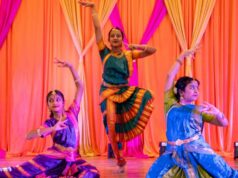Samajwad (socialism) has had a chequered past in India. Back in the early 1870s, a group in Calcutta contacted Karl Marx with the purpose of organizing an Indian section of the First International! Marxism made quite an impact in Indian media at the time of the Russian Revolution. Bal Gangadhar Tilak and Bipin Chandra Pal were amongst the prominent leaders who expressed an admiration for Lenin. The word Socialist was added to the Preamble of the Indian Constitution by the 42nd amendment act of 1976. In India, the Indian National Congress has had socialist tendencies and policies, since the days of the 1931 Karachi session of the party. Communists were active in the Indian independence movement and played an important role in India’s political life, although they are divided into a number of political parties. Historically, leaders such as Netaji Bose and Jawaharlal Nehru were socialist. Aside from the Congress and the Left Front, there are other socialist parties active in India today, including the Samajwadi Party, which emerged from the Janata Dal. However, the reasons for the failure of the socialist in India is due to a multiple reasons.
Most contemporary socio-economic and political models have sprung up from the West, be it socialism or even modern capitalism and mixed market economies. The West feeds the world with its fair share of socio-cultural, economic and political injections, which guide and fundamentally alter the collective psyche and societal orientations of the people. As part of writing this article, I went back to ideas from the early Indian, to a most fundamental idea, from the times of yore – that of Satya or the absolute Truth. Satya is beyond dualities and multiplicities, beyond subjectivity and respectful of equilibrium in society and nature. This is an initiative to see if an Indian conception of politics, sans the crutches of western political philosophies can be synthesised, with most modern socio-economic and political models being a subset and part of this.
Defining Satyavad
The Universe could have been in a vast number of realities (in the multiverse picture, they all exist independently) but it is what it is today. There is a certain order in the Universe, seemingly self-organizing but yet directed. This is what ancient Indian philosophers and seers called Ṛta. That which maintained this order and respected the nuances of this reality was the Truth or Satya. You may start feeling that I will embark on a detour of philosophy and spirituality next. Not quite. After a lot of reflection and meditating on the nuances of these concepts, I feel there are two core ideas and nuances that matter when one speaks of that wisdom that maintains the universal order (Ṛtaniti).
The universe has a relational reality. Modern physics speaks of the Big Bang and the intrinsic unity of all things we see emerging from that one point in the distant past. Over time, these entities and forces and symmetries emerged, giving rise to greater diversity in the Universe. Since then it has been a matter of interactions and relations between entities, coupling and decoupling over time and interactions. Similarly, in society and politics, all that we express and understand is with respect to our perspectives and culturing. What may have seemed like acceptable societal norms in Plantagenet English courts are archaic today. Ideas evolve, concepts evolve. We grow together, we live together. In Vedic philosophy, the unity in Brahman is expressed at each point in time and space, in the nature and activities of all there is in the Universe. As a result, nothing can survive without the safekeeping and nurturing of the unity itself, the oneness in humanity and the natural and honest compassion that comes from such a realization. Therefore the very first element in a philosophy that maintains Satya is that of compassionate politics. A politics that people speak of in terms of welfare states and benefit schemes. A politics of human oneness. That is what can truly mean a refuge in the Truth (Satyashrama) and that which conforms to this idea is Satyavadi (that which aligns with Satya). I espouse a society where basic amenities and tools for not only survival but dignified existence are provided to all. I feel that is crucial for the upholding of Dharma — that which maintains equilibrium in society and the universal order.
However, having said that, I also strongly believe in the idea of Swadharma: the tendencies and capacities of the individual, and a system that provides for opportunities and liberty to the same. Some are born with innate abilities to solve mathematical conundrums. Some are born athletes or singers or artists. Not only at the level of abilities but also comfort in undertaking certain pursuits, every person is distinct. Only when this idea and reality is respected can society remain harmonious and efficient. In today’s age, we have a rush to pursue certain kinds of activities. These are guided by aspects of remuneration and prestige many a times, over and above the comfort and interest of the individual in pursuing them. The ancient system of Varnashrama has been cited a number of times when it comes to problems with Hinduism, and the jati-based segregation is definitely not something I would stand for. It has imbibed a classist and hierarchical sense to it, whereas in certain texts like the Upanishads, it talks of more fluidity in the manner in which individuals must take up professions as per their Swadharma. An academic’s son may become a farmer or blacksmith and a blacksmith’s son may become an academic if both have the respective tendencies, capacities and interest in those pursuits. An important point to note here is that Swadharma can evolve. Someone who is good at singing but falls out of practice and does not maintain that talent may no longer be that suited for singing, while someone who may not a born singer may with practice and time and careful selection of a suitable area of music become known for singing. It is this fluid system, which respects the abilities and interests of the individual, that I would like to stand for without borrowing any terms or references that bring with them a certain baggage (and a lot of debates). I seek to build a society where everyone, in essence, are equal, even though their human differences are evident and acknowledged actively. There is no hierarchy, no class. Just profession based on one’s Swadharma.
So the next question has to be: how do you bring the two strands together? One that respects our relational reality and one that respects our Swadharma. In modern parlance, and looking at contemporary political thought, the question is: how does one balance liberty and equality, the Left and the Right? It is by orienting Swadharma towards the relational reality. That is the true politics of Dharma that I have come upon after reflection. In practical terms, that entails having a basic welfare state that provides for facilities and amenities to all, which includes basic education and universal healthcare. This needs to be using a system of taxation. As Gandhi said, there is enough for everyone’s need but not anyone’s greed. Therefore, the key aspect of allowing people to pursue that which respects their Swadharma is to: firstly, encourage people to feed back into the system, monetarily and otherwise, and secondly, to reduce the accumulation of excessive (and even obscene amounts of) wealth in some hands. Both of these can be done using a few ways, one of which would involve strict progressive taxation and the other could involve a novel way of incentivising the accumulation of social capital rather than financial capital. The near-perfect solution would probably have to be a combination of both.
In the next part of this article Mrittunjoy covers the economic angles, how will money work in this new world?

Mrittunjoy Guha Majumdar
Mrittunjoy is a youth-scientist, student leader, poet, writer, social thinker and activist. He's currently pursuing a postdoctoral project in Physics under Nobel Laureate Prof. Brian Josephson, Cavendish Laboratory, University of Cambridge, and a postdoctoral affiliate of Trinity College, Cambridge. He has been a four-time elected student leader of the Cambridge University Student Union and Cambridge University Graduate Union and was recently selected among the ‘35 under 35 UK-India Young Leaders’ at the first UK-India Young Leaders Forum.

![Powerful Pride documentary Legendary Children [All Of Them Queer] streaming very soon](https://globalindianstories.org/wp-content/uploads/2025/06/Legendary-streaming-release-featured-238x178.jpg)



![Powerful Pride documentary Legendary Children [All Of Them Queer] streaming very soon](https://globalindianstories.org/wp-content/uploads/2025/06/Legendary-streaming-release-featured-100x75.jpg)

